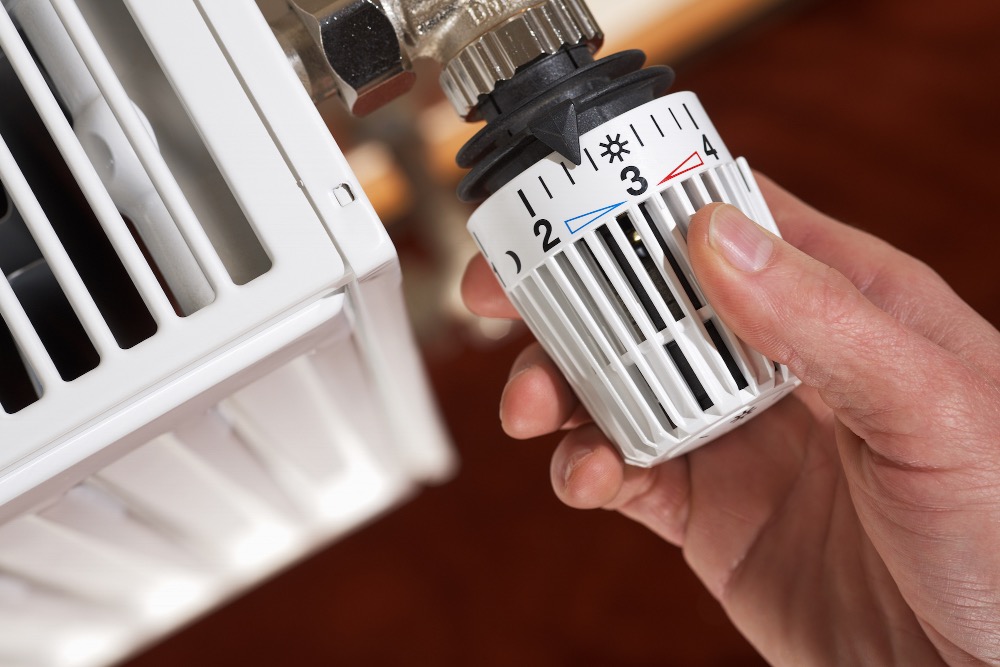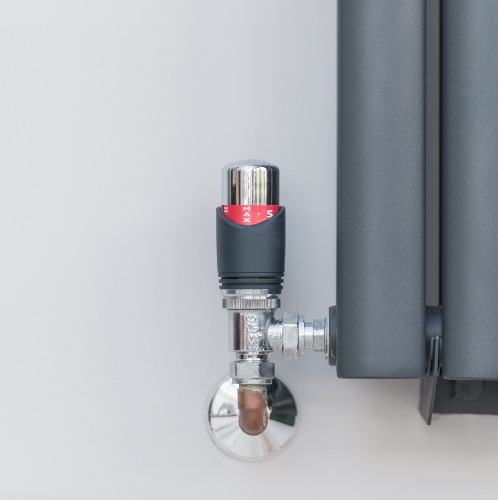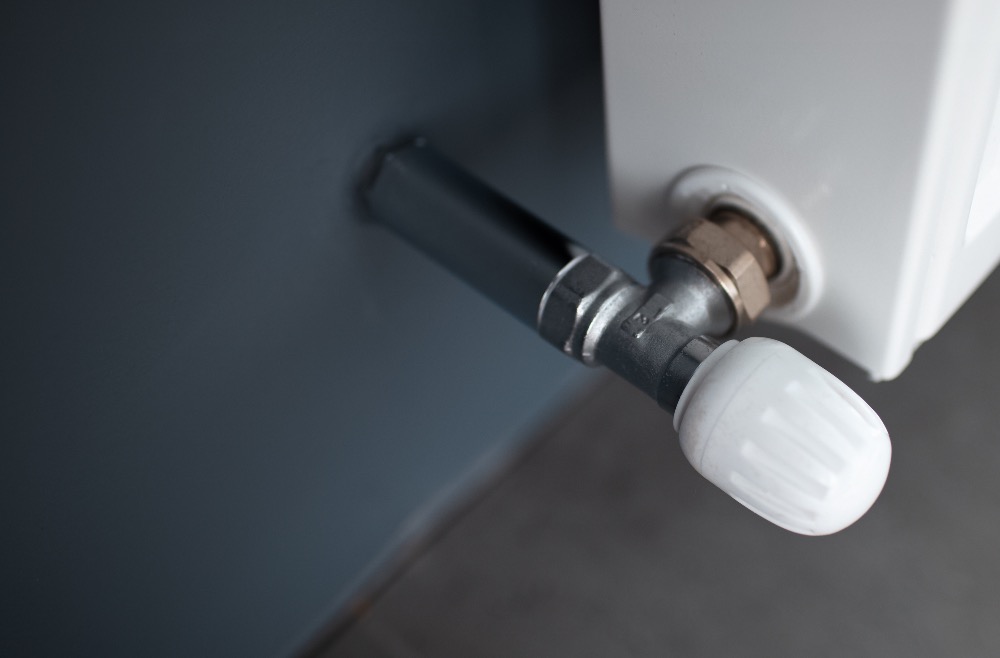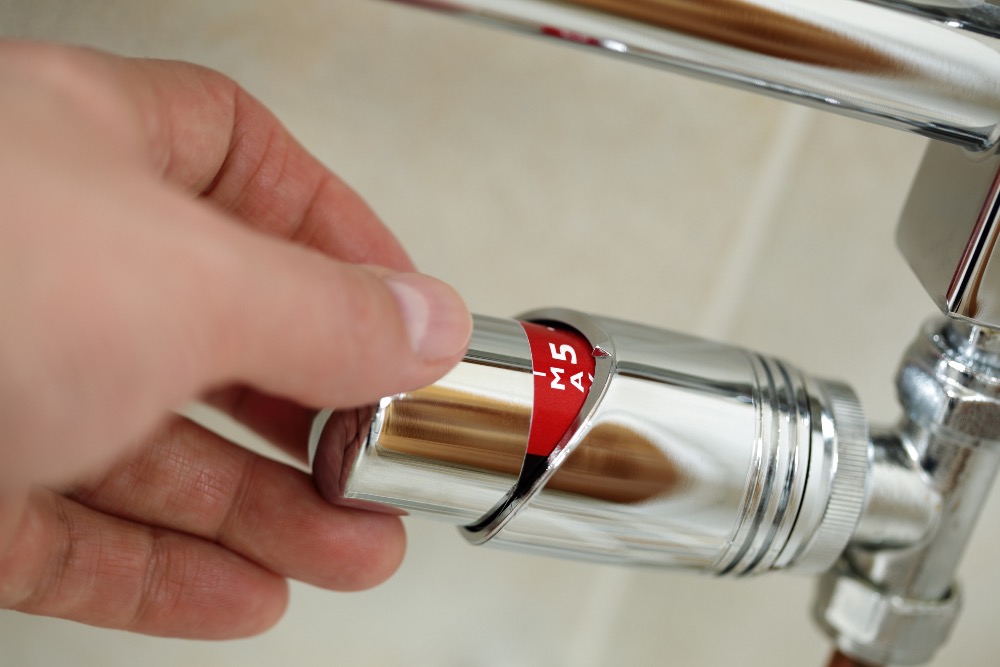Understanding how radiator valves work can help you maintain a comfortable and energy-efficient home. In this article, we'll explain all about radiator valves, talking about the mechanics of radiator valves, the different types that exist, how to fit and replace radiator valves, and how they can make your house more energy efficient.
What Are Radiator Valves?
Radiator Valves play a crucial role in your home's heating system. They regulate the flow of hot water into traditional central heating radiators, thereby controlling the heat output. They can be self-regulating or manually adjusted based on whether you choose to install a manual valves or a thermostatic radiator valve (TRV).
How Do Radiator Valves Work?
Similar to a traditional tap, radiator valves operate in a very straightforward manner: opening the valve allows hot water to flow into the radiator, while closing it restricts the passage of hot water. This simple control mechanism empowers you to adjust the temperature of your radiator, and consequently, the comfort level in your room.

Radiator valves come in two main types: flow valves and return valves. Just like in the radiator flow and return diagram above, you'll find the flow valve located on the left side of your radiator, responsible for regulating the inflow of hot water. On the opposite side, you'll find the return valve, which controls the exit of cooled water (in reality still hot).
As a general rule, it is recommended to keep the return valve fully open, while managing the heat output primarily through adjustments of the flow valve.
Manual Radiator Valves
Manual radiator valves, true to their name, offer a very manual approach to regulating your home's heating. They work on a straightforward principle: you manually control them to adjust the volume of hot water that flows into the radiator.

While this may sound like a faff, manual radiator valves come with their own set of advantages. One of their key strengths lies in their simplicity, which also means they are generally cheaper. With manual valves, you avoid the potential technical complexities of more advanced options.
Thermostatic Radiator Valves (TRVs)
Thermostatic Radiator Valves (TRVs) offer a step up in radiator technology, as they automatically managing the temperature of your room on your behalf. Essentially, you pick the temperature you want your room to be using the scale of numbers on the TRV, and it will regulate the flow of hot water into the radiator for you, guided by the ambient temperature of the room.

The trick behind this clever contraption can be traced to the head of the TRV. Inside, you'll find a highly sensitive sensor, usually made from liquid or wax. This sensor expands or contracts as the room temperature fluctuates. Once it hits the temperature you've set, the sensor will have expanded enough to close the valve underneath it. That puts the brakes on the flow of hot water into the radiator. As the room loses heat, the sensor will release the valve slightly, letting more hot water start circulating again.
The result? The valve automatically adjusts, fine-tuning the heat emitted by the radiator without any manual input. This means that TRVs not only simplify your heating management but also optimise energy usage. They offer the potential for energy savings by reducing unnecessary heating and thus, minimizing your carbon footprint.
What do the numbers on the TRV mean?
The numbers relate to the desired temperature of your room. They go as follows:
Setting | Temperature |
0 | Off |
* | 7°C |
1 | 10°C |
2 | 15°C |
3 | 20°C |
4 | 25°C |
5 | 30°C |
Thermostatic Radiator Valves and Energy Efficiency
As we mentioned, TRVs can optimise your energy usage. By sensing changes in your room temperature they can automatically increase or decrease the demand of hot water to your radiator, saving energy.
According to the Green Age, these savings have been estimated to be up to 40%. When a TRV costs around £40, it's easy to see that the payback is there.
If you're sold on a Thermostatic Radiator Valve, you can get yourself one today right here from PlumbHQ.
Smart Radiator Valves
The mechanism behind smart radiator valves is essentially a sophisticated extension of the TRV. Like their more traditional counterparts, smart valves automatically regulate the flow of hot water into a radiator based on the room's temperature. However, where smart radiator valves truly shine is in their connectivity and adaptability.

Smart radiator valves connect to your home's Wi-Fi network, allowing for remote control via a smartphone or tablet app. This means you can adjust your home's heating from anywhere, at any time. Headed home earlier than expected? Dial up the heat from your phone, so you're welcomed by a warm house. On holiday for the week? No bother. It will know you're away from home so it won't waste energy heating up your home.
The main feature of smart valves is the ability to set flexible and dynamic schedules and zones. You can program these valves to change the heating level at different times of the day or different days of the week, in different areas of your home, ensuring optimal comfort and energy efficiency. No guests this weekend? Ok, then let it only heat the zones of the house you occupy.
Further, smart radiator valves can have a 'learning' feature. Over time, they adapt to your routines and the unique heating characteristics of your home, refining their operation and your schedule for increased efficiency and lower costs.
How To Change a Radiator Valve
When it comes to maintaining and optimising your home heating system, replacing a radiator valve is a task that can greatly improve the efficiency and functionality of your heating system.
Ready to get yours today?
As you can see, Radiator Valves are pivotal components of your radiators and are essential when trying to maintain a comfortable and energy-efficient home. From manual valves that provide direct control, and thermostatic radiator valves (TRVs) that adjust based on room temperature, to the high-tech smart valves offering Wi-Fi connectivity and automation, there's a solution for every household.
Explore our collection of high-quality radiator valves today and elevate your heating game!
Frequently asked questions
What are radiator valves and why are they important?
Radiator valves are essential components of radiators that regulate the flow of hot water, ensuring a comfortable and energy-efficient home. One valve (typically on the left) controls the flow of hot water into the radiator, while the other controls the cooler water leaving.
How do manual radiator valves function?
Like a classic tap, radiator valves work by a screw motion to open and close. Manual radiator valves require simple manual adjustments to control the volume of hot water flowing into the radiator, offering a straightforward but manual approach to heating regulation.
How do radiator valves contribute to energy efficiency?
Radiator valves, especially TRVs and smart valves, adjust the flow of hot water based on room temperature or set schedules, reducing unnecessary heating and promoting energy savings.
What makes Thermostatic Radiator Valves (TRVs) unique?
TRVs automatically regulate the flow of hot water based on the room's ambient temperature, optimizing energy usage and potentially reducing heating costs and saving energy.
Should both radiator valves be open?
In order for the radiator to heat up, both valves need to be open. Typically, the return valve will always be fully open, and you will adjust the flow valve appropriately to control the temperature of the room.
What do the numbers mean on a Thermostatic Radiator Valve (TRV)?
The numbers relate to the desired temperature of your room. 0: Off, *: 7°C, 1: 10°C, 2: 15°C, 3: 20°C, 4: 25°C, 5: 30°C.
How do smart radiator valves enhance home heating?
Smart radiator valves use Wi-Fi to connect to advanced technology that allows for flexible schedules, remote control, and learning such as adapting to your routines, and optimizing heating for different zones in the house. While expensive, they can save energy and costs in the long run.
Is it easy to change a radiator valve?
It may seem like a daunting task, but with the right tools and a clear understanding of the steps involved, changing a radiator valve is a very manageable DIY job. By following our step-by-step guide, you should have no problems.
How to check if my radiator valves are open?
Radiator valves are designed to move up and down to allow water to pass through. TRVs are easy as you can read the numbers, but for the manual valves, turn your radiator valve anti-clockwise and back again to check for movement. Then turn it anti-clockwise as far as it can go. It should rise, showing an open state.
Any more questions?
If you have any queries or questions about the products we sell, or even your next project, give us a shout! We'll try our best to give you a hand.



